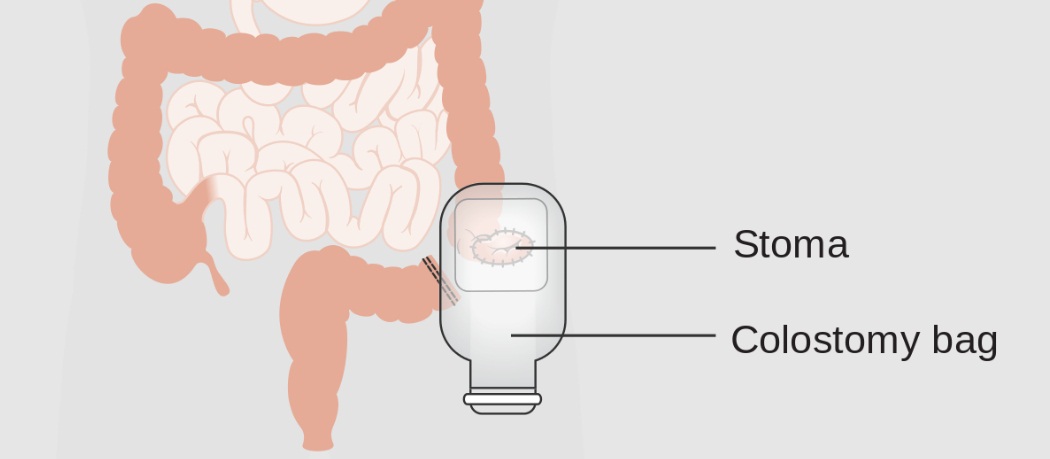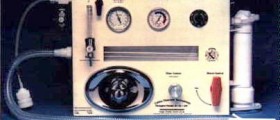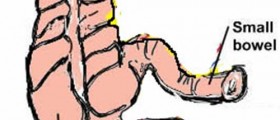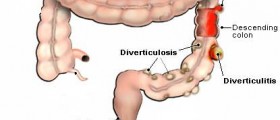Complications of Colostomy
Colostomy is a surgical procedure in which an opening on the front wall of the abdomen is made to ease the removal of feces after extensive operations of the large intestine.
There are several possible complications connected to the procedure. The infection is the leading one. This can be easily explained by the proximity of the bacteria that normally live in the colon. These bacteria can contaminate the operated area. The best way to prevent possible infection after colostomy is timely application of antibiotics.

Prolonged and excessive bleeding can be another complication of colostomy. In some patients who are already suffering from problems with coagulation, there is even a chance of thrombophlebitis. The inflammation and clod clots most commonly affect veins in the legs. Thrombophlebitis may consequently lead to pulmonary embolism, which is a rather serious and potentially life-threatening condition. Some patients may develop pneumonia after the surgical procedure.
An additional complication is the slow closure of the wound. Namely, in some patients, the opening on the front wall of the abdomen is only temporary, and it will be closed once the surgeon decides it is time for that. The wound may need a longer time to heal properly. Still, it eventually heals completely. And finally, it may take some time for a patient to recover completely. The general health of the patients is what determines their recovery.
- Ostomies are commonly formed as diverting measures in the management of inflammatory bowel diseases, gastrointestinal malignancies, and bowel obstructions, perforations, and trauma.
- Ileostomies are preferably created in the right abdomen through the rectus muscle. There are two types of ileostomies: loop ileostomy and end ileostomy. During the creation of a loop ileostomy, a loop of the small intestine is pulled out through an abdominal incision and sutured to the skin. This type of stoma has two openings, which connect to the ascending and descending segment of the bowel.
- Stoma-related complications are common and can be classified as early or late. The rates of stoma complications reported in the literature vary widely, ranging from 10 to 70%. The risk for complications from stoma creation is lifelong, although complications have been reported to be most frequent in the first 5 years postoperatively. Common early complications include leakage and skin irritations, high output resulting in fluid and electrolyte imbalances, or stoma necrosis; late complications include parastomal hernia, stoma prolapse, and stoma stenosis.
- The incidence of early complications from urostomy is reported to be 20–57%. Up to two thirds of patients experience at least one complication within the first 90 days after the procedure, and approximately 20% experience major complications in the early period. Early complications include gastrointestinal complications, infections, and wound problems that are often related to the surgical procedure.
- The most frequently observed long-term complications of urostomy include stomal complications, metabolic complications, and mechanical complications including strictures or stenosis around the anastomosis.
Colostomy Care
The stoma is in the majority of cases made in the lower left area of the abdomen. The stoma is a red, round hole. A specific plastic bag is attached to the opening, and the purpose of this colostomy pouch is to collect feces.
Every patient is taught how to take proper care of colostomy. This is essential because only by proper hygiene one can successfully prevent infections. Some patients require the assistance of a specialized stomal therapist. These specialists will provide all the necessary information about cleansing and irrigation of the stoma.
Irrigation of the stoma is very important, but it does not have to be performed daily. Even though it may be rather stressful in the beginning, patients eventually get used to living with the stoma.
Irrigation will help the patient to maintain regular bowel movements. It will also help to complete the elimination of the stool, so this way there will be no stool elimination between two irrigations. The patient will feel more secure and will not worry about spillage between two irrigations.
Rubbing and friction of the stoma may result in abrasions. These skin changes are treated with lubricated gauze. In case infection or any kind of skin problem occurs, the patient will be given suitable ointments and will be explained what to do to restore the proper health of the surrounding skin.
- www.nhs.uk/conditions/colostomy/risks/
- www.niddk.nih.gov/health-information/digestive-diseases/ostomy-surgery-bowel/complications
- Photo courtesy of Cancer Research UK by Wikimedia Commons: commons.wikimedia.org/wiki/File:Diagram_showing_a_colostomy_with_a_bag_CRUK_061.svg

















Your thoughts on this
Loading...